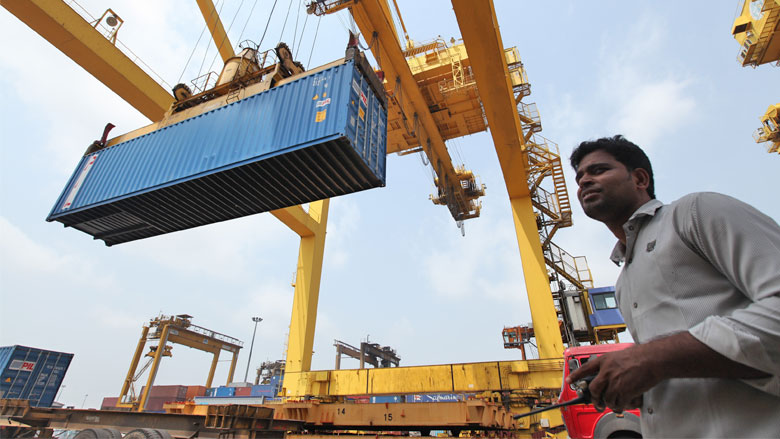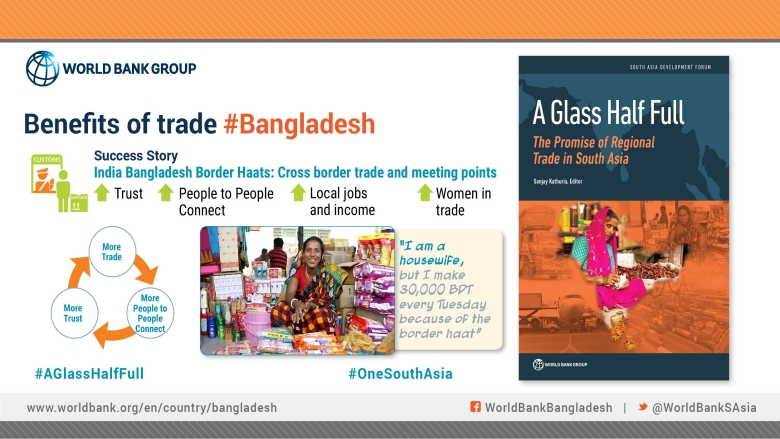Breakfast in Kabul, lunch in Lahore, tea in Delhi, and dinner in Dhaka can become a reality only by increasing trade and connectivity, according to a new World Bank report. By reducing man-made trade barriers, trade within South Asia can grow three times, from $23 billion to $67 billion.
The report ‘A Glass Half Full: The Promise of Regional Trade in South Asia,’ says that Bangladesh has the potential to more than double its trade with South Asian countries, thus creating more jobs for men and women in the workforce. The report was launched by Mr. AMA Muhith, Honorable Finance Minister, and Qimiao Fan, Country Director for Bangladesh, Bhutan, and Nepal. A panel discussion followed the report launch.
The Missing Potential
Intraregional trade in South Asia remains one of the lowest in the world and accounts for about five percent of region’s total trade. Bangladesh’s trade with South Asia is only nine percent of its global trade and it can more than double its trade with South Asia. “Bangladesh can become an economic powerhouse by deepening regional and global integration in trade, connectivity, energy and investment. For increased regional trade, the country needs to focus on improving its trade policy regime, which currently has a strong anti-export bias,” said Qimiao Fan, World Bank Country Director for Bangladesh, Bhutan, and Nepal.
The country is significantly undertrading with India ($10 billion), Pakistan ($540 million), and Sri Lanka ($420 million). Unrealized trade potential ultimately means that people are denied the benefits of cheaper goods – from a carton of milk to bananas – via proximity.


